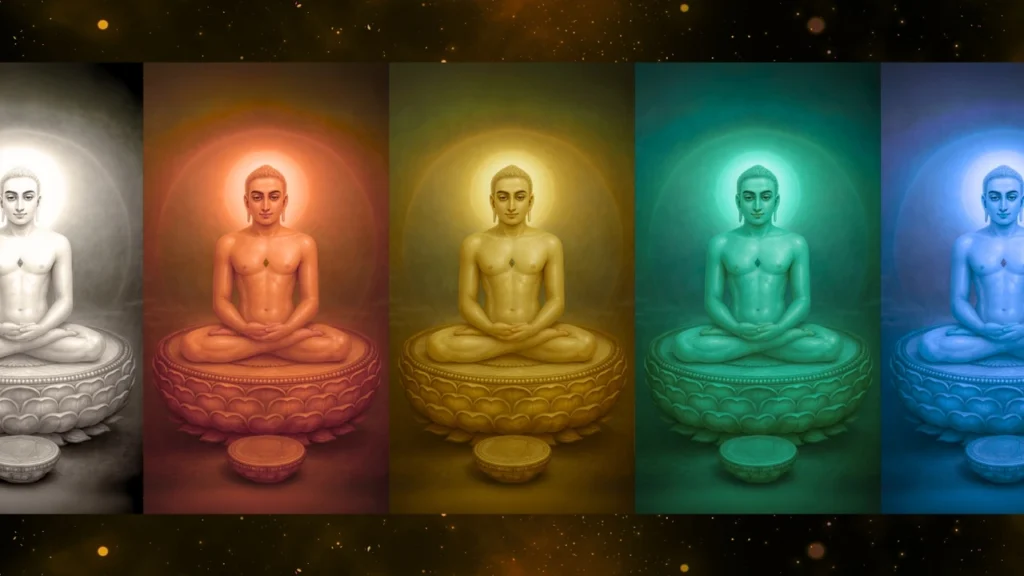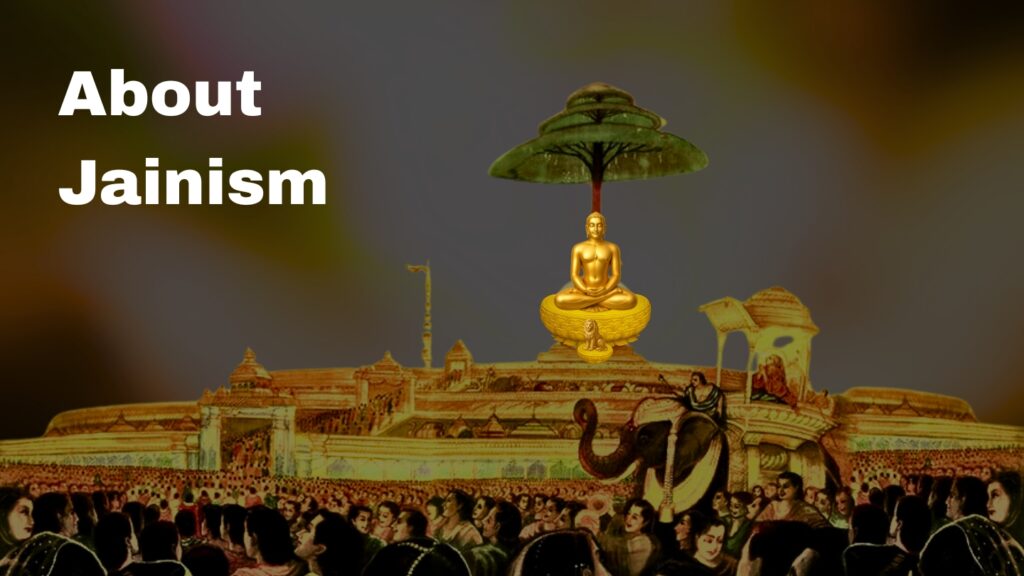Episode 10: Gautam Swami, Sudharma Swami & the Sacred Lineage of Jain Knowledge
A few words, but infinite meaning.Just as a visual may be simple, yet it brings endless joy and wisdom — so is the concept of “Gagar Ma Sagar”: an ocean in a droplet. In this episode, we delve into the glorious tradition of Jain spiritual succession beginning with Gautam Swami and Sudharma Swami, leading to the sacred lineage that preserved Jain knowledge over 2,500 years. 📿 The Establishment of the Ganadharas We know Lord Mahavira’s first sermon was unsuccessful. But during his second sermon, he established the Ganadharas (chief disciples). As Bhagwan Mahavira dispelled doubts and answered spiritual questions, 11 learned Brahmin scholars engaged him in a profound dialogue. This became known as the Ganadharvaad, a powerful text capturing those divine conversations. Only a Kevaljnani — an omniscient one — could have answered such deep philosophical questions. Each of the 11 Ganadharas had a key doubt, resolved by Lord Mahavira even before they accepted monkhood: Each one found his doubt resolved and embraced monkhood. Though they later attained omniscience, they continued to ask questions with the humility of children. Such was the extraordinary humility of the Ganadharas. 🌼 The Deep Bond Between Lord Mahavira and Gautam Swami Despite having 14 Purvas (complete scriptural knowledge), Gautam Swami kept asking questions to Bhagwan Mahavira. This showed his profound devotion and humility. Toward the end of the Lord’s life, Gautam Swami asked why every other Ganadhar had attained omniscience, but he had not. Mahavira replied: “You and I have shared countless lifetimes together. Because of this, you still hold deep attachment towards me.” After Mahavira’s nirvana, Gautam Swami experienced deep grief — but that intense emotional shift transformed into kevaljnan (omniscience). Only Sudharma Swami remained after that. 📖 Sudharma Swami and the Continuation of Knowledge From the first day of the New Year (Kartak Sud Ekam), Sudharma Swami began preaching. The sacred lineage of Jain wisdom, or Paath Parampara, has been unbroken since then. He passed the 14 Purvas on to: Up to Bhadrabahu Swami, all had complete scriptural knowledge. 🦁 The Story of Sthulibhadra and the Breaking of the Purvas Bhadrabahu’s disciple, Sthulibhadra Swami, had 10 Purvas. One day, his two initiated sisters came to visit. With Bhadrabahu’s permission, they approached Sthulibhadra — but saw a giant lion instead of their brother. They reported this back. Bhadrabahu realized that Sthulibhadra had misused his knowledge, showing off by taking the form of a lion. As a result, Bhadrabahu withheld further knowledge and refused to teach the remaining Purvas. This marked the decline of scriptural continuity, from 14 Purvas to 10, then 9, and so on — eventually, only a few Acharyas retained even one. 🖋️ The Shift from Memory to Manuscript During the time of Acharya Devardhigani Kshamashraman (the 23rd leader in the Jain lineage after Mahavira), only 11 Angas (canons) remained. He collected: He initiated the writing tradition of preserving scriptures. Previously, Acharyas would only write what was needed for themselves. Devardhigani declared that all Agams must be written and preserved — ensuring the survival of Jain scripture into the future. 🌠 The Prophecy and Sacrifice Post-Mahavira’s Nirvana As Mahavira approached nirvana, the celestial Indra pleaded with him to extend his life just two moments longer — to avoid an upcoming inauspicious planetary alignment that would bring suffering to Jain followers. Mahavira declined: “No, it is not possible. No being, not even a Tirthankara, can extend their lifespan.” After his liberation, difficult karmic conditions emerged: Yet, the monastic and lay community persisted, enduring hardships to keep Jain dharma alive. 🕊️ Conclusion: Honoring the Sacred Legacy From Gautam Swami to Sudharma Swami, from the earliest Ganadharas to the present-day monks and nuns — countless Acharyas have made immeasurable sacrifices to protect and pass down Jain knowledge. In the last 2,000 years, despite divisions by sects, regions, and practices, the inner unity of Jain dharma has survived. Even today, in the 5th Ara (Dusam Kaal), awareness and unity are increasing across sects and traditions. It is our moral duty to acknowledge and revere every Acharya, saint, and practitioner — past and present — who made this living legacy possible. Let us never forget: “Namo Thiralam – Namo Sarvopakarivyaḥ”Salutations to all who preserved this dharma for us.


